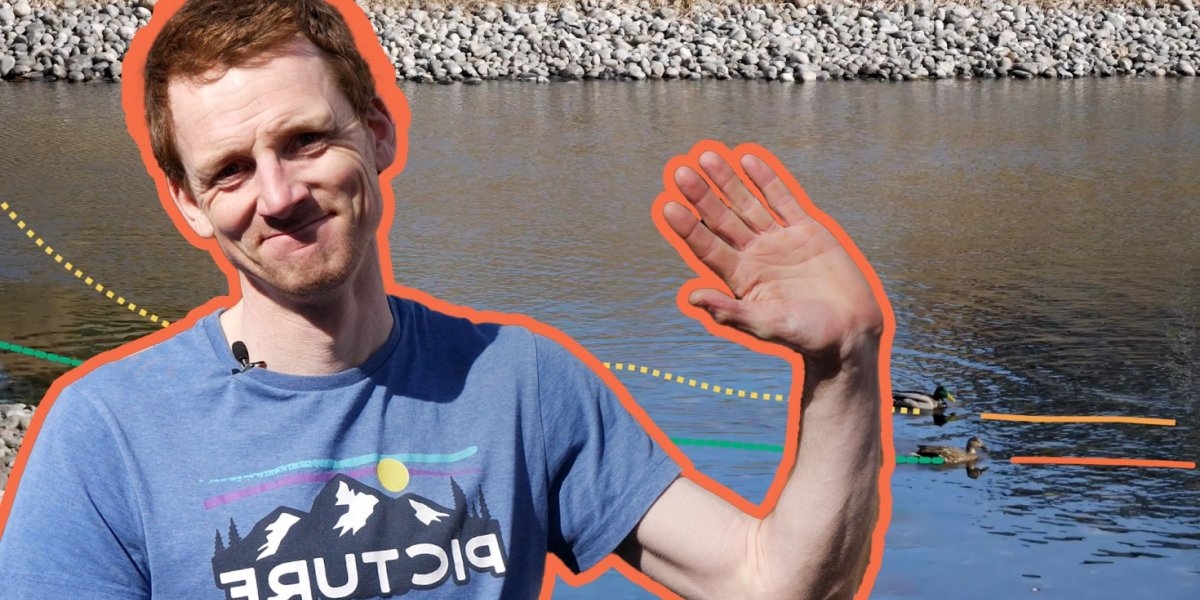CICERO researcher Ben Sanderson in front of duck pathways. Photo: Amund Aasbrenn
Back to the future: About scenarios and what they can tell us
The latest report from the UN Intergovernmental Panel on Climate Change (IPCC) completes its trilogy on causes, impacts and solutions relating to global warming. The key to understanding the solutions lie in the scenarios that illustrate how society may develop towards a carbon-free future.
What are scenarios?
What if ...?
Climate researchers from all over the world are sitting in a room full of supercomputers. Scribbled in red marker and posted on a cork board in the middle of the room is a huge white piece of paper with the words 'What if ...?'
The scenarios in the climate panel's database are not predictions about the future; they are the result of a long series of highly qualified thought experiments in what the future may look like.
What if the conflict level in the world continues to escalate but technology makes great strides in the 2030? What if the problems in the climate negotiations are resolved in 2025 but the global economy suddenly plunges? Plot the factors into the models and see what might happen. A scenario can, for example, be based on current climate policy, assume that no changes occur, and see what the climate might look like in 2070.
But where do all these scenarios come from?
Since the previous full climate report (AR5) came in 2014, Working Group 3 (WG3) has gathered emission scenarios that have been presented in scientific articles by researchers from all over the world. These have been gathered in a database that was made publicly accessible along with publication of the latest report on Monday 4 April. The scenarios are often created with the help of something called integrated assessment models (IAMs).
IAMs have one foot in the natural science camp and the other in the social science camp. The natural science camp (left foot): climate models, mathematical equations and in-depth understanding of physics and chemistry enable researchers to model how the planet will behave today and how it may behave in the future. The social science camp (right foot): global warming does not occur in a vacuum. Conflicts, economies, industry, society, technology and politics affect global warming, and at the same time are affected by global warming.
If you model based on knowledge from both the right and the left foot, you get a two-footed tackle with insight: IAMs. Integrated assessment models take account of technological, material and industrial development, international cooperation, climate policy, agriculture, forestry, demography and a bunch of other factors. Modelling with the help of IAMs creates scenarios that say something about potential futures.
Back to the future
Scenarios can tell us what the future may look like, but it is also important that they be analysed. correctly. In a recent article published in Carbon Brief, Dr Joeri Rogelj gives examples of best practice:
“Using scenarios correctly involves selecting key scenarios carefully and understanding the assumptions behind them – ideally, presenting scenarios that illustrate contrasting implications of the choices available for decision makers. A good example are the four illustrative pathways of the IPCC’s 1.5°C report, which show four different pathways that return warming below 1.5°C by 2100, but with very different levels of reliance on carbon dioxide removal.”
With the help of scenarios, we can examine implications of climate policies, international cooperation and emission changes. We can look at potential futures and what it would take to get there. Scenarios say something about what may happen, and they tread some of the paths that can be used on the way back to the future.
Further reading: How not to interpret the emissions scenarios in the IPCC report
